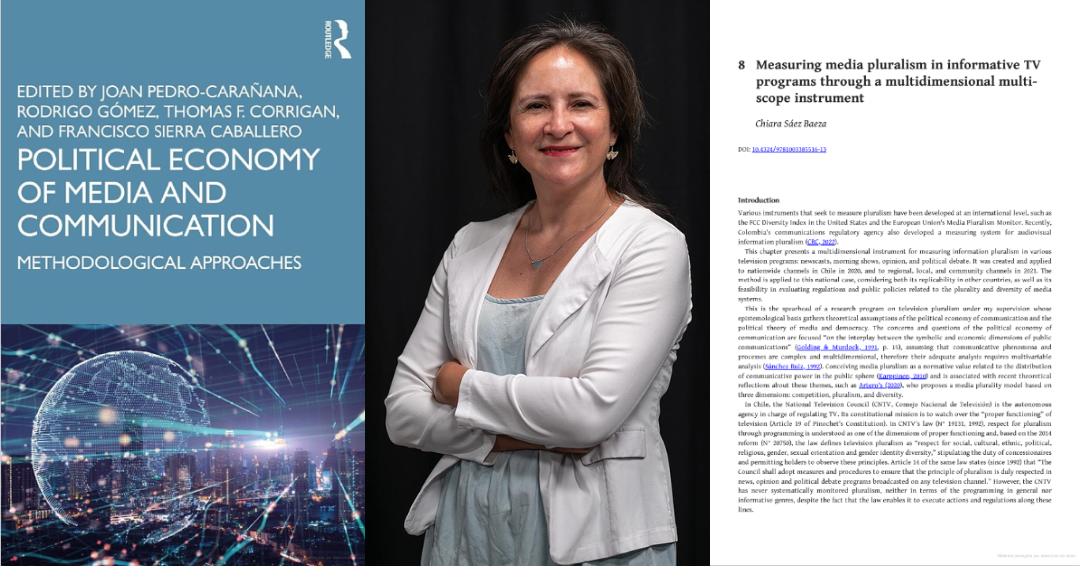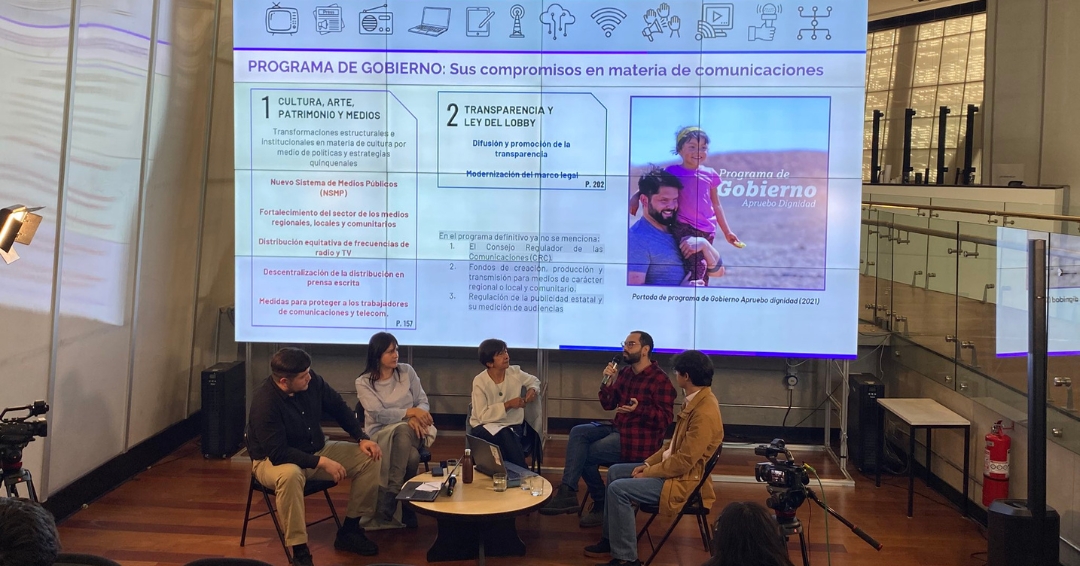With contributions from across the world and a variety of methodological perspectives, the book “Political Economy of Media and Communication” presents the state of the art in political economy of media and communication methods, articulating those procedures with adjacent approaches to study the concentration of ownership and power, pluralism and diversity, regulation and public policy, governance, gender and sustainability.
Researcher and academic Chiara Sáez pointed out that “it is an honor to have been invited by the editors to make a contribution to this book, which provides tools to study the research problems that have defined the field of the political economy of communication, such as diversity and media pluralism, ownership concentration, competition and regulation, in an applied manner. They saw the instrument’s potential both in terms of its replicability in other countries and its feasibility in assessing regulations and public policies linked to the plurality and diversity of media systems.”
She added that “this work summarizes the results of two studies on measuring information pluralism in television conducted in 2020 and 2021 by teams under my leadership, which allowed applying and validating a multidimensional instrument for measuring information pluralism in different television programs: newscasts, morning shows and talk shows. It was created and applied in Chile, first to nationwide channels and then to regional, local and community channels.”
The first book devoted specifically to research methods in the political economy of media and communication provides a set of methodological tools for analyzing the functioning of media, cultural industries and technology in their historical, institutional, structural and systemic contexts.
This collection shows the methodological innovations that critical political economists are adopting to analyze a rapidly changing digital media landscape, exploring ideology, narratives, socio-analysis and praxis in communication with ethnographic and participatory approaches, as well as quantitative and qualitative method designs for textual communication, content and discourse analysis, and network analysis that consider the power relations affecting communication, including intersectional oppressions and new developments in artificial intelligence.
It is an essential text for advanced university students, graduate students and researchers in media, cultural and communication studies, particularly those studying topics such as the political economy of media and/or communication, the theory of media and communication, and research methods.
Review the chapter below.
Capitulo_ECP_Routledge

